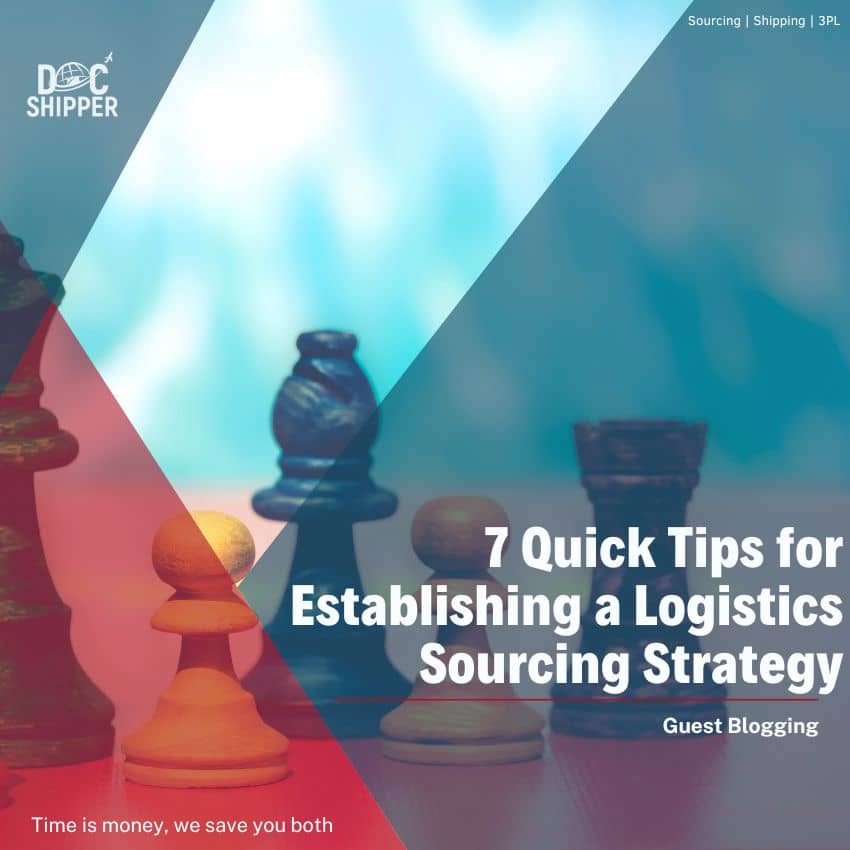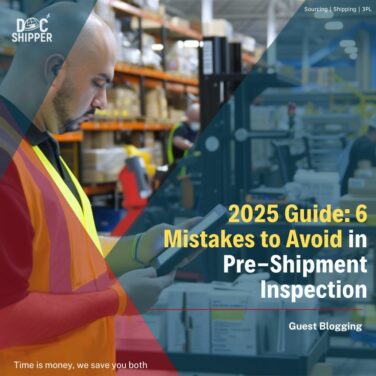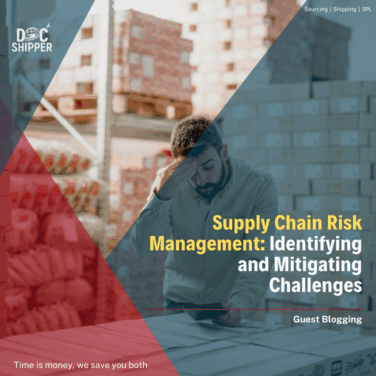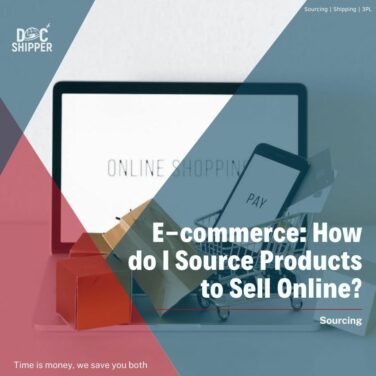It is often challenging to integrate the infrastructure and systems for supporting the transfer of goods from one place to another. In the process, the companies also need to innovate in the logistics department while not failing to provide the desired and standard quality of services to their consumers. The more you pay attention to the logistic space of your business, the more value and success your brand will receive as an outcome.
Quiz: What Logistics Sourcing Strategy Best Fits Your Business Needs?
Question 1: What is your primary business objective when sourcing logistics services?
Question 2: How would you describe your supply chain complexity?
Question 3: What is your preferred approach to logistics management?
Your Recommended Logistics Sourcing Strategy:
On the other hand, working with the wrong commodities supplier can have detrimental impacts on the growth and development of your company. Especially when you consider the effect it has on your logistics, the consequences can become fatal.
Suppliers often fail to serve all the stores of your business chain in time. Even though such an event might not affect your business finances, it would undoubtedly negatively affect your brand’s reputation.
And recovering from reputational damages is pretty challenging for any business. Therefore, you need to be on the lookout to identify and implement successful logistics sourcing strategies to spark profits and interest rates in your company. In such cases, you can outsource to a skilled logistics partner who can help kindle innovation while keeping your time and budget constraints in mind.
So, if you are looking for beneficial and effective ways to establish logistics sourcing strategies in your business or company, this article will answer your question. Here we will talk about logistics and sourcing in detail to help you get an idea of how to establish a logistics sourcing strategy for your enterprise is simple and practical steps.
But before we move on to the MVP of our article, let us get a few things straight to diminish your doubts:
What is sourcing in logistics?
💡 ATTENTION: 83% of businesses overlook the impact of logistics sourcing on their bottom line. Industry leaders achieve 18-22% cost reduction by optimizing supplier relationships rather than focusing solely on unit prices. A mid-sized electronics manufacturer saved $1.2M in 2023 by restructuring their logistics sourcing strategy. Now let’s examine why this strategic approach is so crucial for your business growth.
- The cost structures
- The profit margins
- Competitiveness of the markets
DocShipper Conseil
DocShipper Advice : If you want to learn more about strategic sourcing, read our article : Strategic sourcing : The finest approach to procurement management
What is the importance of sourcing?
⚠️ IMPORTANT: 76% of companies select logistics partners based solely on price, ignoring critical capability factors. This mistake costs businesses an average of $430,000 annually in supply chain disruptions. In March 2024, a fashion retailer lost $2.1M when their low-cost logistics provider failed during peak season. Understanding the different sourcing models can help you avoid this costly pitfall.
Your suppliers will benefit from it as they will have a consistent outlet for their goods.
What are the different kinds of sourcing?
ℹ️ INFORMATION: Navigating 13+ sourcing models creates overwhelming complexity for most businesses. DocShipper’s proprietary logistics evaluation framework has helped clients achieve 31% faster time-to-market and 24% cost reduction in 2023. Our experts match your specific business needs to the optimal sourcing strategy, eliminating guesswork. Ready to discover the practical steps for establishing your own winning logistics sourcing strategy?
Looking for a Reliable
Sourcing Partner?
We handle the entire sourcing process, supplier research, negotiation, production, and inspections, so you can focus on what matters most: growing your business.


Looking for a Reliable Sourcing Partner?
We handle the entire sourcing process, supplier research, negotiation, production, and inspections, so you can focus on what matters most: growing your business.
- Outsourcing
- Insourcing
- Near-Sourcing
- Low-Cost Country Sourcing (LCCS)
- Global Sourcing
- Prime/Subcontracting Arrangements
- Captive Service Operations
- Professional Service
- Manufacturing
- Vertical Integration
- Few or many Suppliers
- Joint Ventures
- Virtual Enterprise
What are the 7 quick tips that can help you establish a logistics sourcing strategy?
Tip n°1 : Collect all the required data
First, you must start with collecting relevant and valuable data. Even though data collection itself sounds so dull, it is vital since it helps you identify and thus reduce risks in your business. You need to start with identifying the primary parameters that drive the shape and size of your business operation. Some factors you need to consider are sourcing and supply, customers, service levels, geography, end-to-end timings, stocks, etc.
Data requirements Effective logistics sourcing demands comprehensive data collection to accurately define your needs and evaluate potential service providers. Gather detailed information about your current operations before approaching the market.
- Volume data: Annual shipment counts, weights, and dimensions
- Geographic scope: Origin/destination pairs and service coverage needs
- Service requirements: Transit times, special handling, customs support
- Historical performance: Current provider metrics and pain points
Create a standardized data collection template to ensure consistency across all business units and regions. This foundation will strengthen your negotiating position and help identify the most suitable logistics partners.
That said, let us now understand what kind of data you need to collect for outsourcing. It will largely depend and vary based on your current business operation. Here are some of the types of data that almost every business operation needs to collect:
- Range of your products
- Volumes of your stocks
- Picking up and ordering profiles
- Information of dispatch
- Transport requirements
- Intake levels
DocShipper Info
DocShipper info : Your time is precious, and if you don’t want to spend it by collecting those required data, or if you need help for it, DocShipper can do it for you, it’s a part of our sourcing service. If you want to rely on DocShipper, contact us.
DocShipper info : Your time is precious, and if you don’t want to spend it by collecting those required data, or if you need help for it, DocShipper can do it for you, it’s a part of our sourcing service. If you want to rely on DocShipper, contact us.
Tip n°2 : Bring in your key stakeholders
Many businesses often make mistake involving their key stakeholders at a much later time interval in the logistics sourcing process.
Stakeholder engagement Involving key stakeholders early in your logistics sourcing initiative ensures alignment with broader business objectives and increases adoption of the final solution. Identify representatives from operations, finance, and customer service teams.
| Stakeholder | Contribution |
| Operations | Service requirements, daily workflows |
| Finance | Budget constraints, payment terms |
| Customer Service | Customer expectations, reporting needs |
Schedule regular update meetings to maintain momentum and address concerns throughout the sourcing process.
You need to realize at this point that you must have your key stakeholders on board as soon as possible. The later you involve them, the more challenging it will become for you to implement your logistics sourcing strategies.
In the process of your logistics sourcing event, your business is likely to have mainly two different kinds of stakeholders – internal and external.

Let us take a look at both of them at a glance:
- Internal Stakeholders: Your internal stakeholders comprise the logistics department operating in and outbound logistics. It generally includes the planning of transport facilities and warehouses. Based on the kind of role of logistics, some businesses often find it beneficial to incorporate customer services and sales.
- External Stakeholders: Your external stakeholders, on the other hand, serve as logistics service providers to your company, as well as your key customers. The present logistics service provider of your business must remain aware of the service that is « on the market. »
Tip n°3 : Map your spends
After your business has established a consistently procured and reliable database to fall back on, you can then eventually start to work on mapping your spending. It will help you understand your business’s requirements much more efficiently than ever before.
You can map your spending based on region, category, Pareto distribution, and your present suppliers. These are some of the best ways to spend mapping.
In this process, you work on visually comprehending the immediate and midterm capacity required in every category. It will also help you understand how spending is distributed judiciously in your supplier base.
Tip n°4 : Work on analyzing your market

The main purpose of analyzing your market is to properly understand the cost drivers and the demand indicators that act to steer the prices of each of your suppliers. It will also help you figure out the players in your markets specifically.
Understanding your supply market helps you know your buyer power and the kind of position that your sourcing strategy needs to hold. Performing an in-depth market analysis will help you determine the best sourcing strategy that suits your needs.
You can use Kraljic’s Matrix method to help you categorize your vendors in an organized way.
It works as a two-by-two matrix mapped against two key dimensions – risks and profitability. The former here demonstrates the likeliness of unexpected events to occur that might seek to disrupt your operations. On the other hand, the latter talks of the possibility of affecting the bottom line of your organization or company.
Tip n°5 : Work on analyzing your segments
Now that you have already accomplished the process of spend mapping, analyzing each segment of your business will seem relatively straightforward.
Based on your spend mapping, you now need to explore the different elements that comprise each component of your business.
For instance, you can start working on the different cost categories that seek to represent the majority of your spending in every segment. You can also find out how many logistics suppliers are presently active in each piece of your business. You can then even assess the market constraints of each of these segments by cross-referencing your market analysis with the structure of your present supplier.
In analyzing the segments, you also need to assess the business impacts in each category. You can do this by analyzing the share of your spending, the criticality of your business, and any positive or negative cost impact to understand.
DocShipper Alert
DocShipper Alert : By analyzing all your segments and their market constraints, you also have to analyze the supply-chain risks. To help you with this step, DocShipper has written the 4 Strategies to Help You Manage Supply Chain Risk effectively, which will be very helpful to understand what these risks are and how to manage them.
DocShipper Alert : By analyzing all your segments and their market constraints, you also have to analyze the supply-chain risks. To help you with this step, DocShipper has written the 4 Strategies to Help You Manage Supply Chain Risk effectively, which will be very helpful to understand what these risks are and how to manage them.
Tip n°6 : Clarify your category strategy
After you have positioned your category spectrum, the next thing to do is define the strategy by figuring out the location or area of your business.
Category strategy development A well-defined logistics category strategy helps align your sourcing decisions with overall business objectives. This framework should clearly articulate how logistics services support your competitive advantage.
- Define service categories: Freight forwarding, warehousing, customs clearance
- Establish priorities: Cost, speed, reliability, sustainability
- Determine sourcing approach: Centralized vs. decentralized decisions
- Set performance metrics: KPIs to measure provider success
According to WTO (07/2022), companies with clearly defined logistics category strategies reduce procurement cycle times by up to 40%. Review your strategy annually to adapt to changing market conditions.
While working in a low market constraint with a common business impact, you need to focus on reducing the number of suppliers on which your company currently depends. You need to streamline your purchasing process to work efficiently and effectively.
On the other hand, if you are working in an environment of low constraint with high business impact, ensure that your business prioritizes reducing costs and using volume instead to negotiate.
But, if you are working in a high constraint market with low business impact, you need to focus on reducing risks and exposure and secure the existing supply chain.
Lastly, if you are working in an environment with high constraints and business impact, you need to focus on establishing long-term relations with strategic partners. These partners would be helpful to you in helping you ensure the maintenance of value and containment of risks.
Tip n°7 : Understand and work on the resources that you require
Underline different yet specific actions that will allow you to execute your strategies in each of the designated categories in the coming future. It can include processes like resourcing, renegotiating, extending your contracts, and giving a new shape to your terms of service.
You need to find out the required budget, the sourcing IT suits, the alignment of business functions, and the required approvals. These factors will help you to start implementing your logistics sourcing strategy gradually.
There might be times when you might feel that the resources are limited. Under such circumstances, you can integrate this variable into your analysis and work on giving your sourcing strategies a new shape.
With this, we end our article about establishing logistics sourcing strategies in businesses. And now that you understand and know how to implement them in your company, you are free to come up with your ideas to make the best of them.
So go ahead and see which tips and techniques suit your business and will help give your brand-new identity and success!
FAQ | 7 Quick Tips for Establishing a Logistics Sourcing Strategy
Read more
Looking for more? These articles might interest you:
Looking for more? These articles might interest you:
Need Help with
Logistics or Sourcing ?
First, we secure the right products from the right suppliers at the right price by managing the sourcing process from start to finish. Then, we simplify your shipping experience - from pickup to final delivery - ensuring any product, anywhere, is delivered at highly competitive prices.










